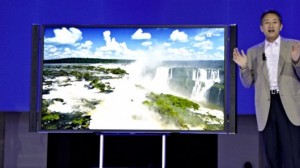The 4K HDTVs which were shown at CES this year have managed to impress a lot of people and chances are that soon enough we will see this technology in TV’s available on the market. If you’ve seen one of these TV’s, you know what kind of impact they have and it’s a good chance that they will be the next type of TV. Maybe you were not tempted to change your old HDTV with a 3D model, but you will be tempted to get the 4K HDTV. Before you’re able to get a 4K HDTV though, the technology has to catch up. One of the pieces of the puzzle that will make this happen is the latest announcement from VESA, which released the latest version of the Dual Mode DisplayPort Standard, which will be used in future computers, together with the cable adaptors designed for it. This new standard improves the interoperability but it also gives the cable adaptors a better data rate (from DisplayPort to HDMI for example) and it offers support for display resolutions from HDMI 1.4, including 60 Hz 1080p 3D and 4k by 2k Ultra HD at 30 Hz.
 This standard is developed by more than 200 companies that are part of VESA and it defines the Dual Mode DisplayPort’s requirements for cable adaptors and source devices. This technology was created in order to offer just one video interface which has advanced features but also comes with interoperability with HDMI, DVI and VGA, which are older displays. Since this latest standard enables support for the most recent HDMI standard, it does exactly what is supposed to do.
This standard is developed by more than 200 companies that are part of VESA and it defines the Dual Mode DisplayPort’s requirements for cable adaptors and source devices. This technology was created in order to offer just one video interface which has advanced features but also comes with interoperability with HDMI, DVI and VGA, which are older displays. Since this latest standard enables support for the most recent HDMI standard, it does exactly what is supposed to do.
Devices which are capable of outputting TDMS or DisplayPort from their output connector that is marked as DisplayPort are considered sources which are Dual Mode DisplayPort. A cable adaptor is also needed in order to convert the signal to HDMI or DVI and to make the connection physically. The detection of the type of signal which is needed is done automatically, so the HDMI or DVI monitor will receive the type of signal that it needs without input from the user.
Now that these VESA standards are released, the adaptors that are already on the market are considered Type 1, with the new models being considered Type 2. The source device that the Type 2 adaptor is used with needs to be compatible with it, otherwise the adaptor will be limited to a clock rate of 165 Mhz TMDS.